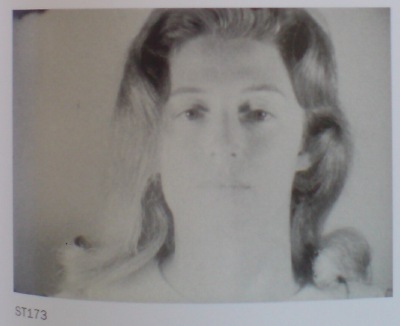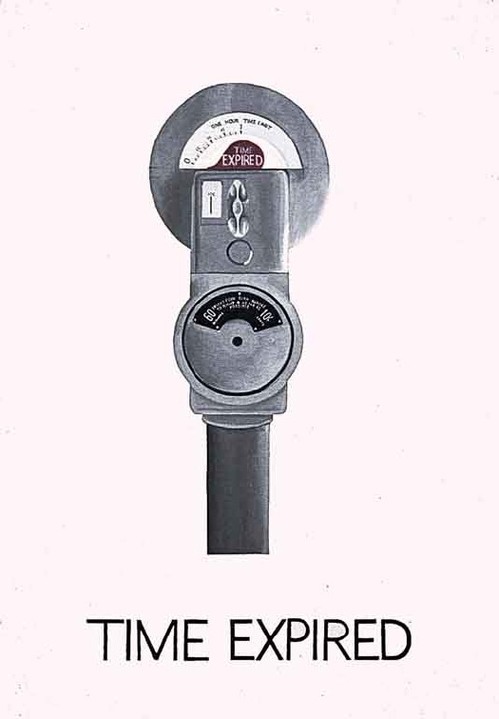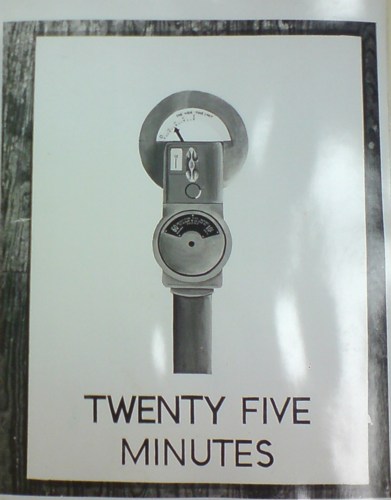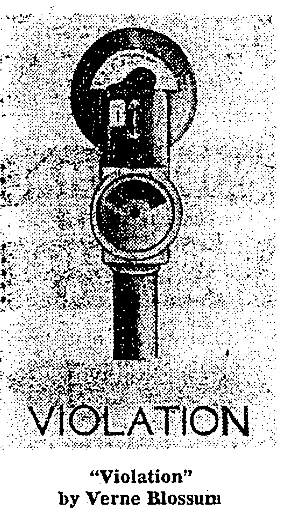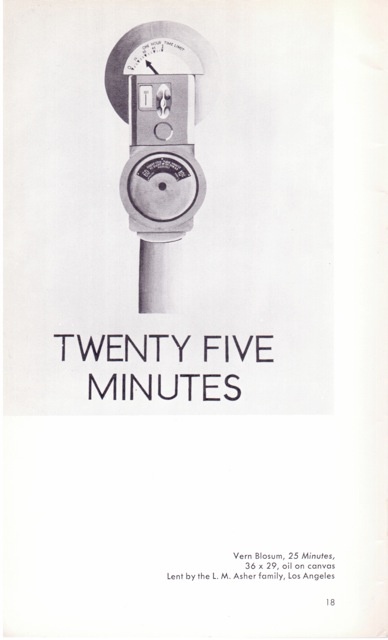You remember how, a couple of months ago, I could find next to nothing online about Vern Blosum, the mysterious artist whose crisp, deadpan paintings of parking meters were featured in one of the very first museum exhibitions of Pop Art, “The Popular Image,” organized by Alice Denney in the Spring of 1964 1963 at the Washington Gallery of Modern Art?
Well, we’re making a little progress. I’ve been in touch with people who know or knew Blosum and his work. As I piece his story together, I’ll present it here. For an artist to show alongside Warhol, Rosenquist, and Oldenburg, and to be collected by MoMA and Larry Aldrich [1], and then to practically disappear, well, it’s fascinating.
What I really wanted to do, of course, was to find and see Blosum’s work, to see how it might relate to those earliest Pop contemporaries, and maybe see how it holds up. But all my searches came up empty. Until tonight. Somehow, Blosum’s entry in an art history teaching image database at California State University [WorldImages at SJSU, to be specific] showed up on Google.
There’s a very clean image of Blosum’s 1962 painting, Time Expired, which is listed as being in MoMA’s collection [a mystery again because MoMA’s online catalogue comes up a blank]. I’m looking into that, but first, just look at this.
It’s not a flat, billboard style like Rosenquist, or a flattened silkscreen image like Warhol or a deliberately graphic/comic style like, say Lichtenstein. And it’s not photorealistic, and certainly not Photorealist, despite how Cal State apparently teaches it, Instead, it’s quite illustrative, the city street version of Wayne Thiebaud’s diner desserts. I think it’s really quite nice.
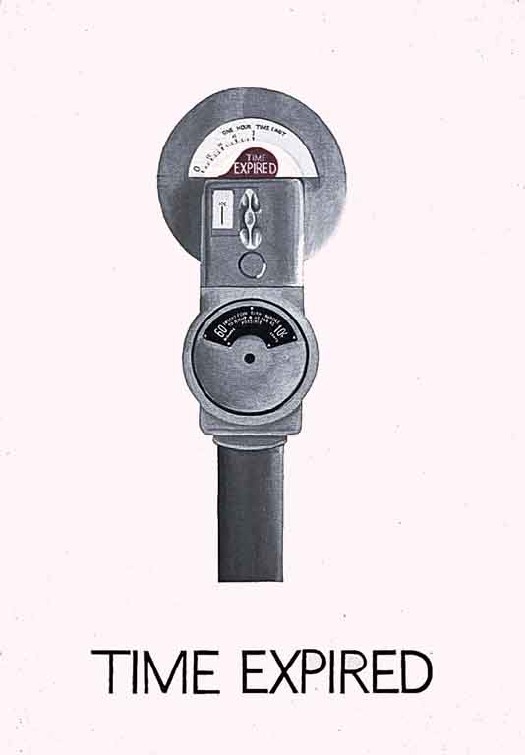
[1] Actually, I misread that. One of the only web results for Blosum was in Larry Aldrich’s 1972 interview with Paul Cummings in the Smithsonian’s Oral History collection at the Archives of American Art. That led me to a couple of lengthy discussions with folks at the Aldrich Museum about whether they have the Blosum painting Larry clearly said he’d bought. They don’t.
Now I see why. Aldrich is talking about the MoMA painting above, Time Expired. He created a multi-year fund for Alfred Barr and Dorothy Miller to purchase new work from emerging artists, and he was telling Cummings what works the Museum got from the fund each year. This 1962 Blosum came into the collection in 1963, just as, or just before, Denney was assembling her show in DC.
It’s funny, because the dynamics and challenges for museums to collect new work don’t seem to change that much. It can still be tough, or at least problematic, for curators to ask their donors to buy unproven and/or less expensive work, partly because of ask fatigue, and partly because big donors like to donate for big things.
Also, Aldrich’s unabashed discussion of using his fund to get the Museum’s curators to do his “shopping” for him is simultaneously awesome, refreshing, and cringe-inducing.
One to help young American artists, and quite frankly, the second one was a personal selfish one in thinking that in essence they could help my efforts and sort of do my shopping for me, because, as I said, I could only get out once every two weeks and sometimes I wasn’t even able to successfully do that. And I was under an impression, which I since learned was a mistaken impression, that they had people combing New York galleries all the time. Which I discovered was not the case.
He then recounts all these collecting war stories where he “loses” work to the Museum, or where he complains that prices have gone up because he’d let MoMA buy an artist’s work before he got it himself. He sounds a bit tacky, but passionate, with a good eye, and in his telling, at least, if there were any potential conflicts, the Modern always prevailed.
Previously: Anyone tell me about Vern Blosum?





